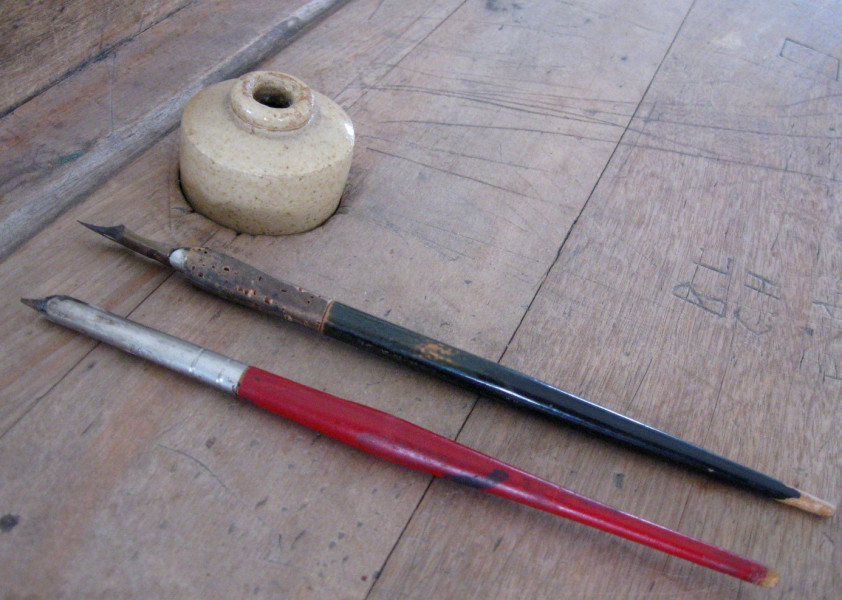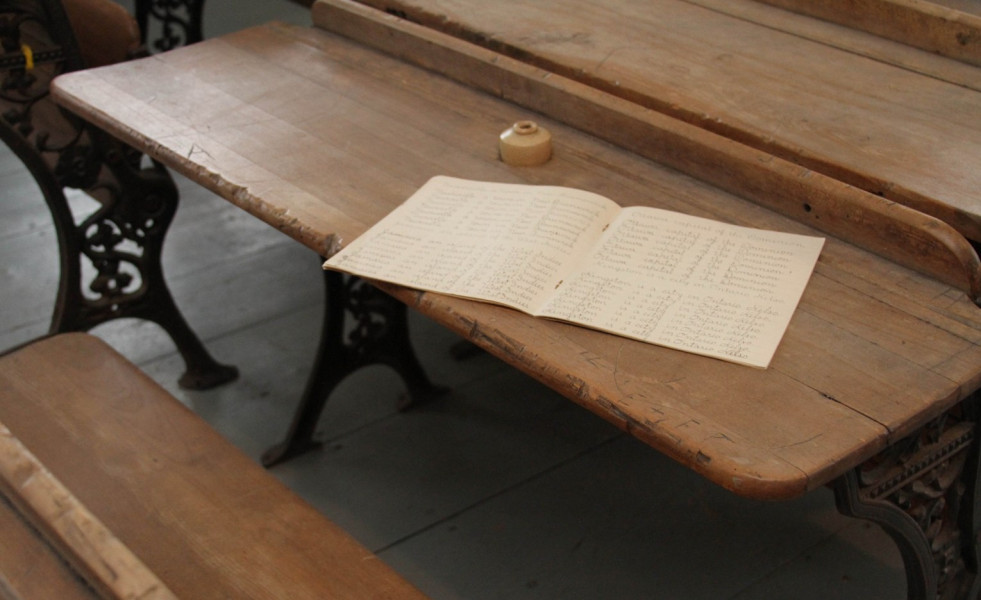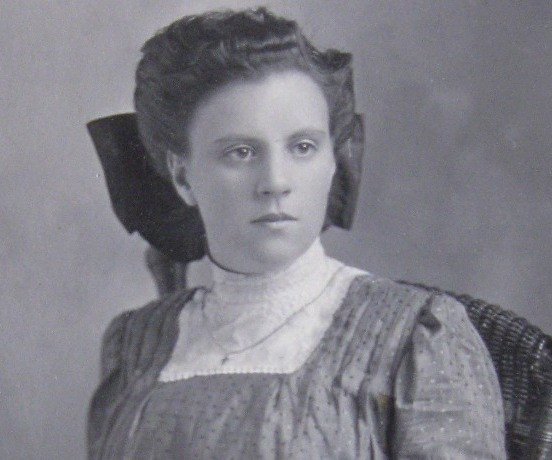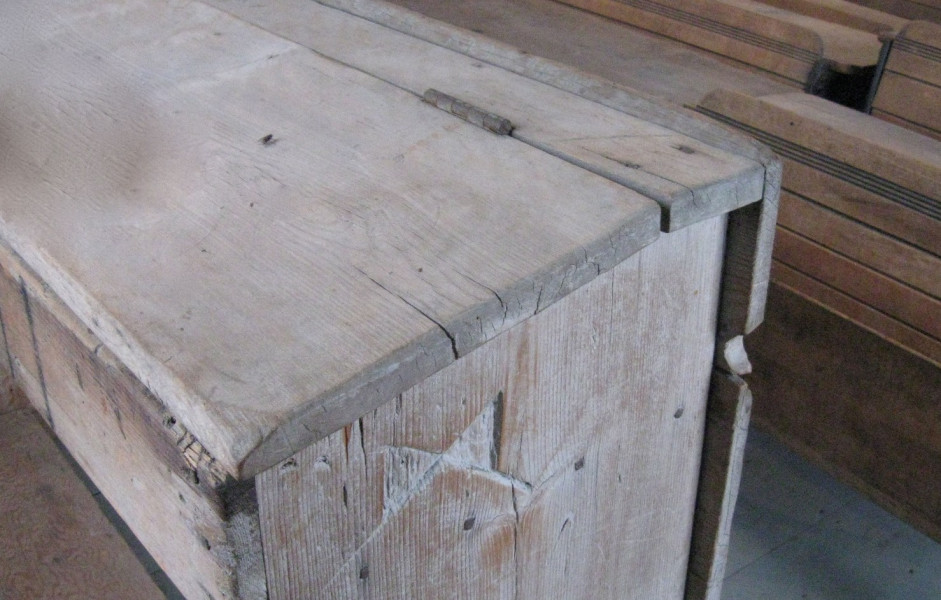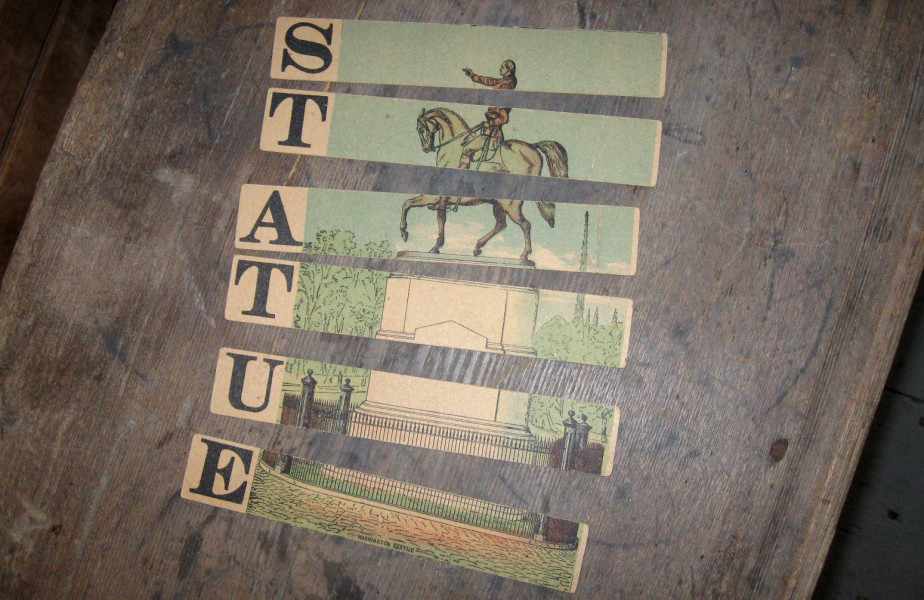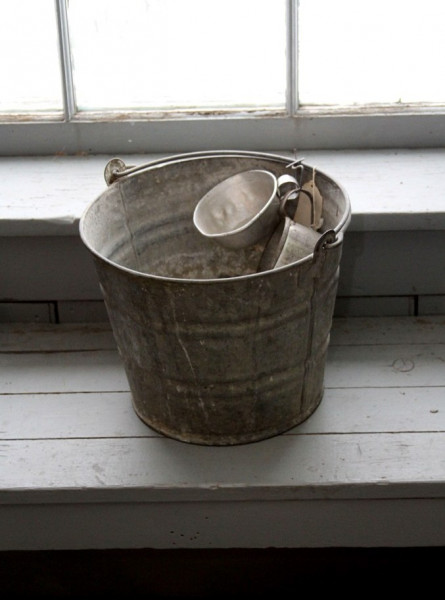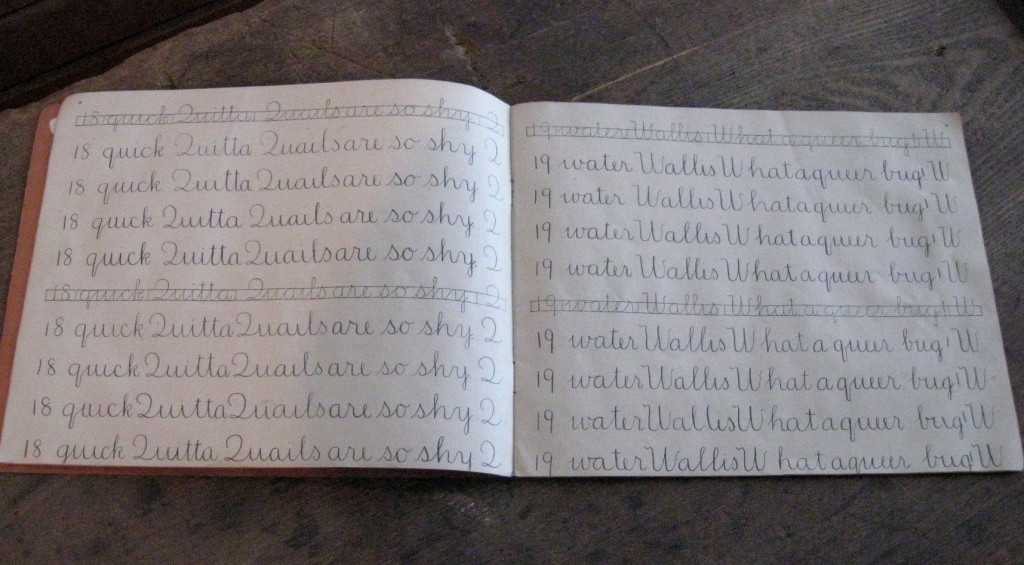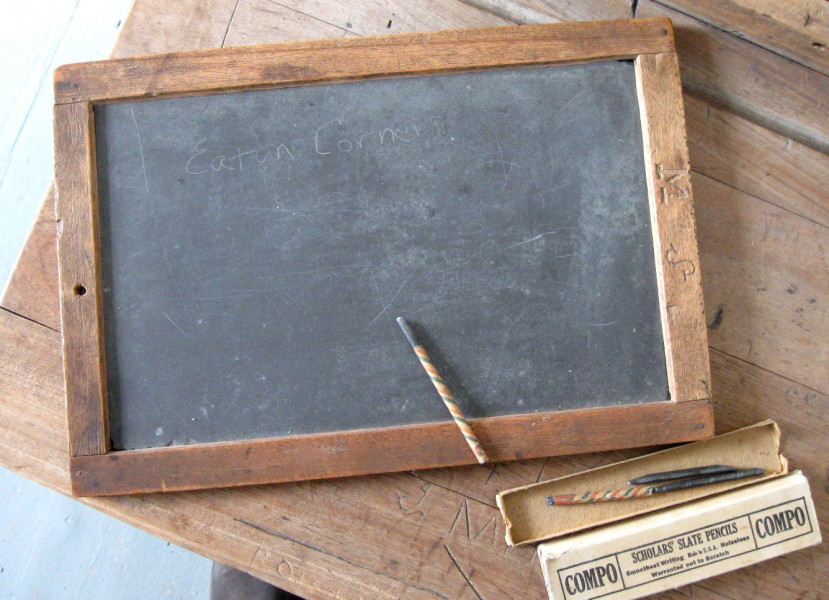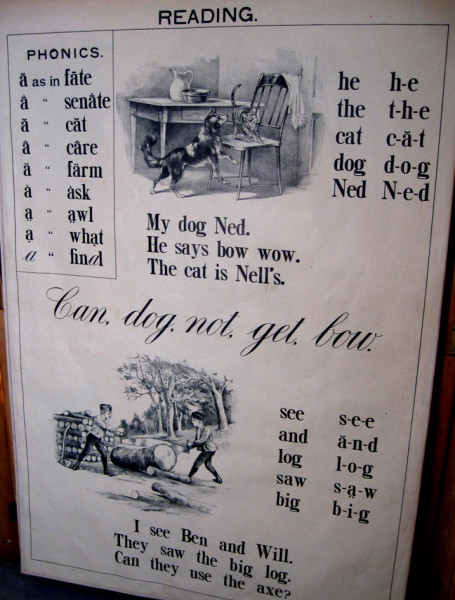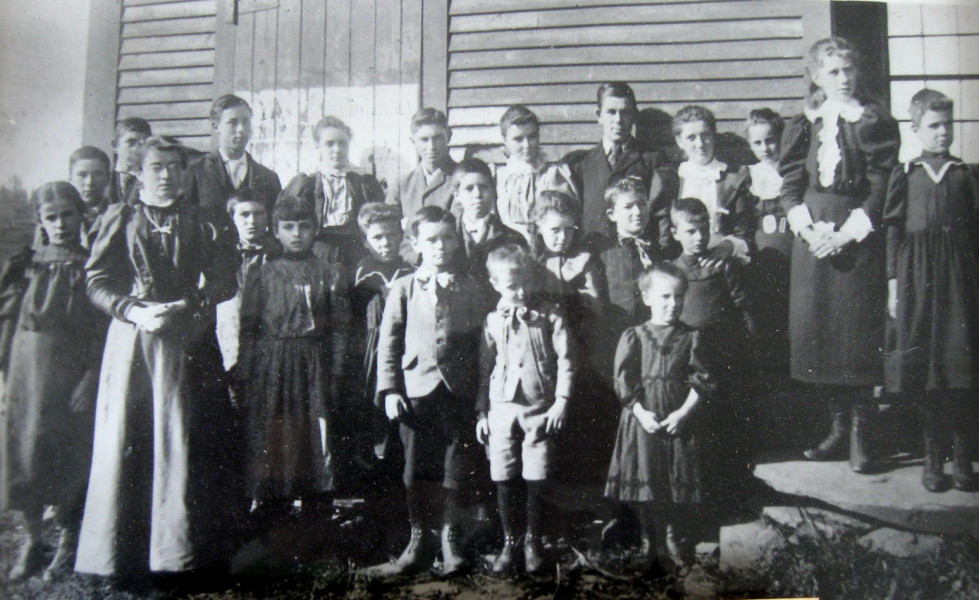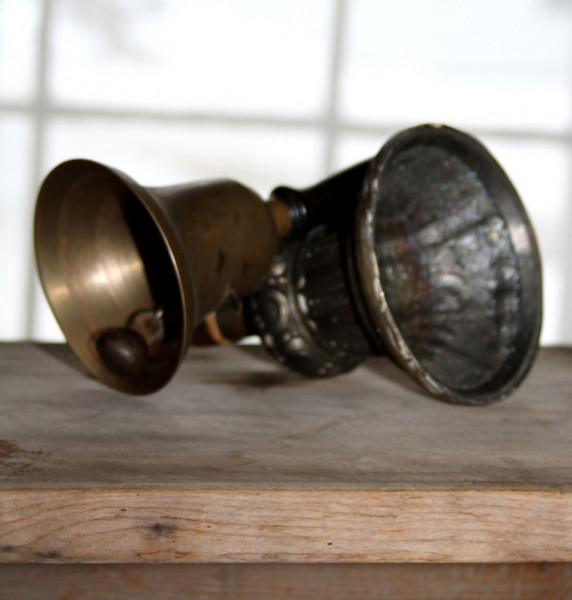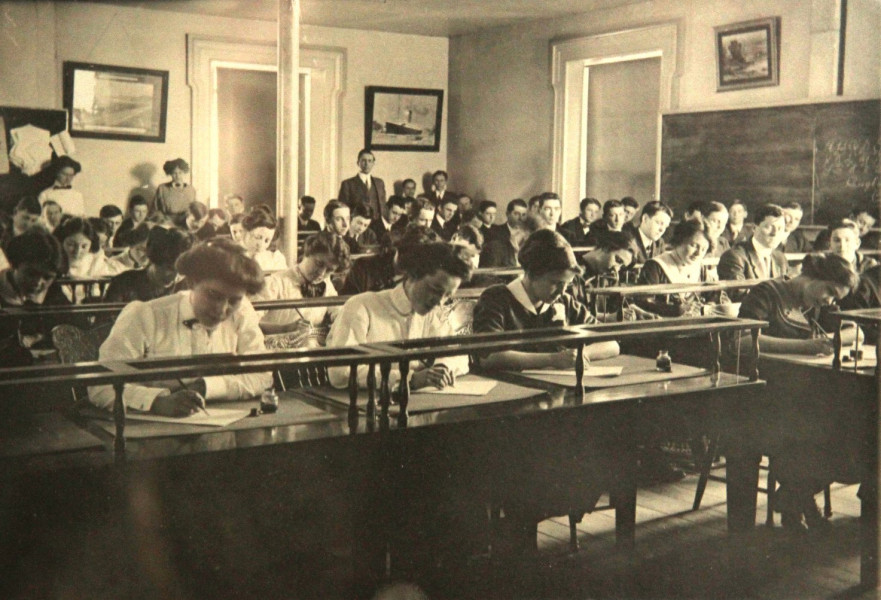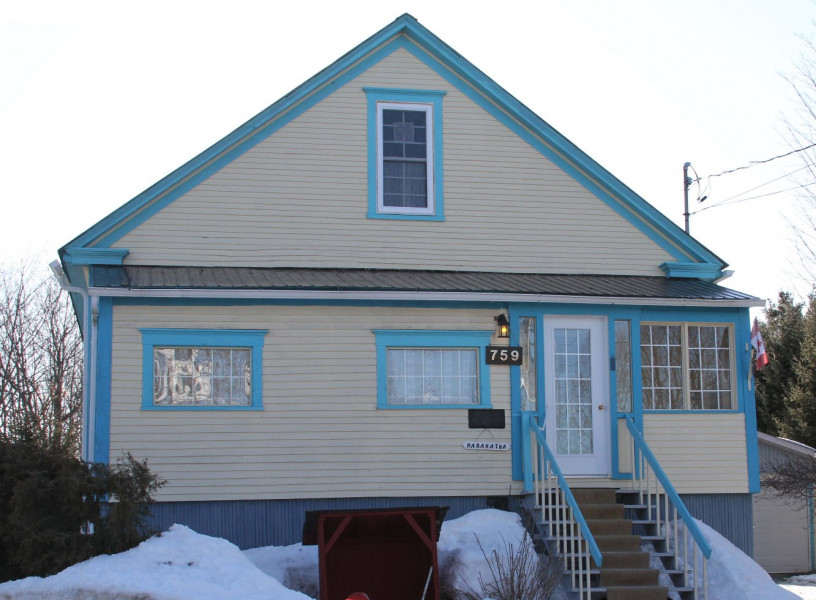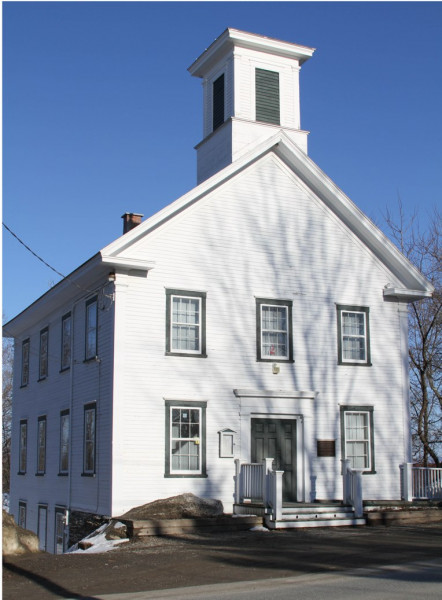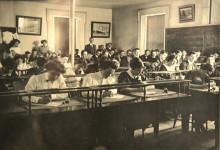There was little time for educating their families when the first settlers arrived in Eaton in the early 1800s. Clearing the land, growing food, building log homes, and preparing for the long cold winters, kept them far too busy to leave much time for teaching literacy and academic subjects to their children.
It was during the long winter evenings, when the work had slowed down somewhat, that youngsters might be given a rudimentary education at home. But these early American settlers valued education enough to establish their own primary schools without government assistance. By the 1830s, Compton Township was found to have one of the most literate populations in the province.
The Compton County Historical Museum in Eaton Corner displays its school room collections on the second floor of the Academy Building. Visitors can see what a classroom looked like at the end of the 1800s, and can view many of the teaching materials used at the time. There are a number of school books on geography, math, French, Latin, and other subjects, published in the 1800s, and many photographs of the old schools and pupils.
The early 1800s: With frequent migrations back and forth cross the border, there was little to distinguish the older townships culturally from New England. Even the school texts were American until the 1840s. Pupils studied the three R's at the lower levels, with geography and English grammar replacing reading and writing as they grew older. Until “model schools” and “academies” were established in the Townships to teach beyond the primary level, students had to travel to New England for higher education.
The first school class recorded in Eaton Township was in 1810, held near Cookshire and taught by a Mr. Prebble. Later, school was sometimes taught by a minister who divided his time between church and school.
At first there were only small one-room schoolhouses providing a primary level education. “Model schools,” elementary schools with more than one qualified teacher, were rare. The Cookshire Academy, built in the 1820s, provided the highest level of education in the area at the time, drawing students from all over the Townships. Many graduates of the Cookshire Academy schools became primary school teachers in the area.
In those days, school was not free. Around 1900, fees ranged from 30 cents a month for Primary pupils, to $3 per term for Academy students.
The Eaton Corner Academy opened in 1864. Its purpose was to provide a high school education, and to prepare students for the “Board of Examiners” examinations. If these exams were passed, the student could obtain a teacher’s diploma.
The Eaton Corner Academy had two teachers. Sadly, after only 24 years, it had to close its doors after failing to make insurance payments. It was sold by sheriff’s sale on December 1, 1888 to the Township of Eaton, after which it was used for more than a hundred years for council meetings and community functions. The contemporary Town of Cookshire-Eaton now gives the Historical Museum Society in Eaton Corner the use of the building to display some of its collections and to house for offices.
References:
Sources of information for this page include:
L. S. Channel, History of Compton County and Sketches of the Eastern Townships district of St. Francis and Sherbrooke County, 1896.
C. S. Lebourveau, A History of Eaton, 1894.
J. I. Little, Colonizing an Eastern Frontier, Compton County, Quebec. Canada’s Visual History, No. 58, National Museum of Man, National Film Board of Canada.
Monique Nadeau-Saumier, commissioned research on Joshua Foss, 1796-1881.
Sharron Rothney, Eaton Corner, 1972.
